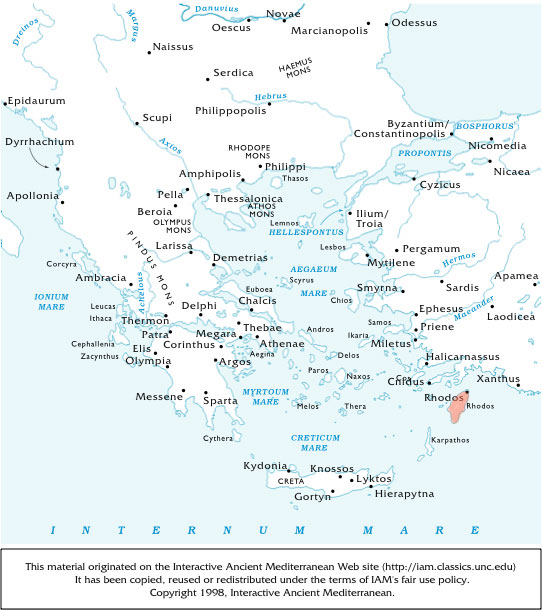
Rhodes
The mountainous island of Rhodes lies in the Aegean Sea, 12 miles (19 kilometers) off the coast of Turkey. Rhodes belongs to Greece and is the largest and easternmost of a group of islands called the Dodecanese.
About one third of the island's 542 square miles (1,404 square kilometers), mainly along the coast, is farmland. Farm products include wheat, tobacco, oranges, figs, grapes, and olives. Rainfall is plentiful, and the hills are well forested. The largest city, on the northeast tip of the island, is also called Rhodes. This city is the modern trading center of the Dodecanese Islands. Industries include shipbuilding and light manufacturing.
The island of Rhodes was colonized by the Dorian Greeks about 1000 BC. The city of Rhodes grew later and became an important trade center. The city was famous for a great bronze statue called the Colossus of Rhodes (see Seven Wonders of the World).
Later Rhodes became a possession of the Roman Empire of the West. Still later it fell under the control of Byzantium. During the Crusades Rhodes was seized by a crusading order called the Knights Hospitalers (see Crusading Orders). They rebuilt and fortified the city of Rhodes. The knights lost the island to the Ottoman Turks in 1522. Italy took the island in 1911-12 and made it a military base. During World War II it was heavily bombed by the Allies. After the war, the peace treaty ceded Rhodes to Greece. (Encyclopaedia Britannica)
